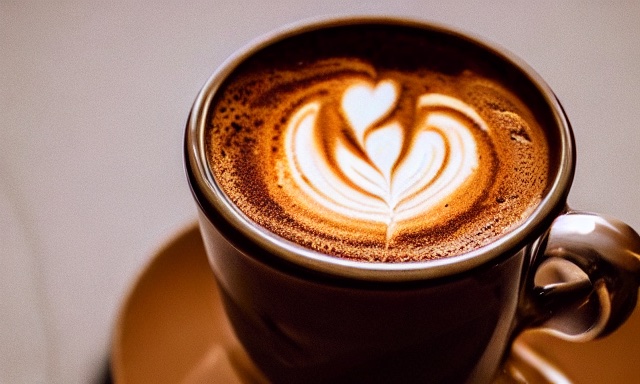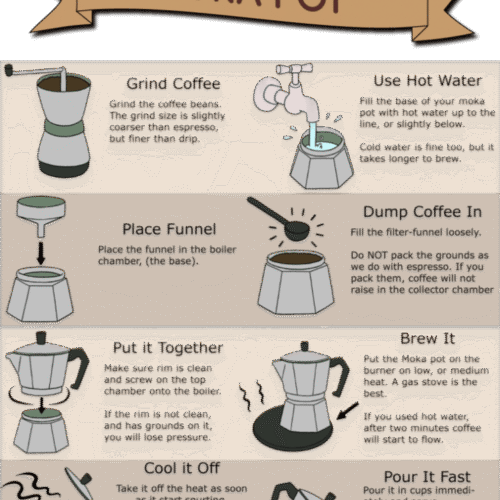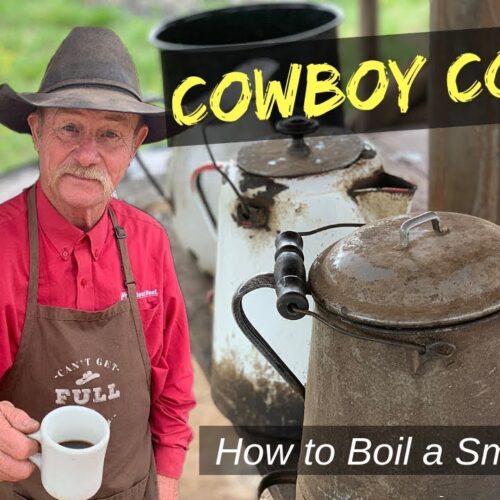A cappuccino typically has slightly less caffeine than regular coffee. The difference stems from the milk content and coffee to milk ratio.
Understanding the caffeine content in your morning brew is crucial for both coffee aficionados and casual drinkers alike. Cappuccino, a beloved Italian coffee drink known for its frothy texture, generally contains a single shot of espresso combined with steamed milk and milk foam.
This blend creates a balance between the robust flavor of coffee and the creaminess of milk. Regular coffee, often referred to as drip or brewed coffee, is made by pouring hot water over ground coffee beans, resulting in a strong, caffeine-rich beverage. The choice between the two often comes down to personal preference in taste and desired caffeine impact. With a cappuccino, you savor the espresso’s intense flavor softened by dairy, while a cup of coffee offers a straightforward, no-frills caffeine fix.

Credit: longevity.technology
The Basics Of Cappuccino And Coffee
Exploring the world of caffeinated delights, one often considers the choice between a rich cappuccino and a classic coffee brew. Understanding the essence of both helps in making an informed choice. Each has unique ingredients, brewing methods, and caffeine levels to suit various preferences.
Cappuccino Composition
A cappuccino does more than wake you up; it’s an artful blend composed of equal parts. One-third is espresso, providing the rich coffee base. Another third is steamed milk, adding smooth texture. The final third is milk froth, creating the iconic cappuccino cap. This trio makes every sip a balance of flavors and temperature.
- Espresso: The coffee foundation
- Steamed milk: Adds creamy consistency
- Milk froth: Delivers the signature look and feel
Traditional Coffee Brews
Traditional coffee, often called “regular” coffee, varies in its brewing techniques. Drip, French press, and pour-over are a few ways to make a coffee brew. The type of coffee bean, grind size, and water temperature can alter the caffeine content. An average cup of coffee typically exceeds the caffeine found in a single cappuccino.
| Brew Method | Bean Type | Grind Size | Water Temperature |
|---|---|---|---|
| Drip | Varies | Medium-Fine | Hot |
| French Press | Varies | Coarse | Near Boiling |
| Pour-Over | Varies | Fine | Hot |
Unraveling Caffeine Content
When choosing between cappuccino and coffee, caffeine content is often a deciding factor. Many believe that a cup of cappuccino might pack more caffeine than a regular coffee. But is that really the case? This post unravels the actual caffeine content in both beverages to help you make an informed choice.
Measuring Caffeine
Caffeine levels in coffee drinks can be measured in milligrams (mg). A standard cup of coffee typically has around 95mg of caffeine, while a cappuccino, which consists of espresso and steamed milk, contains about the same amount of caffeine as a shot of espresso, usually around 63mg per shot.
| Drink | Caffeine Content |
|---|---|
| Standard Coffee | 95mg |
| Cappuccino (Single Shot) | 63mg |
| Cappuccino (Double Shot) | 126mg |
Factors Affecting Caffeine Levels
Different factors can change caffeine content in both cappuccino and coffee:
- Type of coffee bean – Robusta has almost double the caffeine of Arabica.
- Grind size and brewing method – Finer grinds and certain methods extract more caffeine.
- Ratios of milk to coffee in cappuccinos can dilute caffeine concentration.
- Serving size – A larger cup means potentially more caffeine.
The Cappuccino Buzz
Welcome to the warm and inviting world of cappuccinos! This beloved coffee drink captivates senses with its rich aroma, creamy texture, and gentle caffeine embrace. Unlike regular coffee, cappuccinos offer a unique experience. They blend the boldness of espresso with the softness of foam to create a delightful morning or afternoon pick-me-up. Let’s dive into what sets cappuccinos apart, especially in terms of caffeine content and the all-important foam factor.
Foam Factor In Cappuccinos
The foam isn’t just for looks; it’s essential to the cappuccino’s charm. A perfect cappuccino has three layers: a shot of espresso, a layer of steamed milk, and a crown of frothy foam. This foam acts as an insulator, keeping the drink warm and enhancing the smooth texture.
- Espresso – Rich, concentrated coffee at the bottom.
- Steamed milk – Adds warmth and dilutes the intensity of espresso.
- Frothy foam – A cloud of air-filled bubbles on top.
Caffeine Impact In Cappuccinos
While a cappuccino offers a bubbly texture, its caffeine impact remains similar to that of a regular coffee. The main source of caffeine in a cappuccino is the espresso shot. A standard shot contains roughly 63 milligrams of caffeine. The amount in your cup stays consistent, regardless of size, because cappuccinos follow a specific ratio:
| Drink Size | Espresso Shots | Caffeine (mg) |
|---|---|---|
| Small (6 oz) | 1 | 63 |
| Medium (12 oz) | 1 | 63 |
| Large (18 oz) | 2 | 126 |
Therefore, choosing a cappuccino means enjoying a consistent caffeine kick. The size difference is made up with more milk and foam, not more coffee. This means you get the same energizing effect with every sip.

Credit: www.facebook.com
Comparing Caffeine: Cappuccino Vs Regular Coffee
Cappuccino and regular coffee stir up the world of caffeine lovers. Each has a unique taste, texture, and, most crucial, caffeine content. The quest to understand their caffeine kick is common. Let’s dive into the facts.
Per Serving Analysis
Cappuccino, a blend of espresso, steamed milk, and foam, typically contains one shot of espresso. An average cup of cappuccino holds about 75-80mg of caffeine per serving.
A regular coffee, brewed and served plain, generally has about 95-200mg of caffeine in an 8oz cup. The difference lies in the brewing process and the amount of water used.
| Coffee Type | Caffeine Content |
|---|---|
| Cappuccino (8oz) | 75-80mg |
| Regular Coffee (8oz) | 95-200mg |
Volume For Volume Battle
Comparing equal volumes can get tricky. A one-ounce shot of espresso has about 63mg of caffeine. The same volume of regular coffee holds only about 12-16mg. This means, ounce for ounce, espresso punches harder.
However, we usually drink more volume of regular coffee. Hence, a full cup has more caffeine than a single shot of espresso.
- Espresso (per ounce): 63mg
- Regular Coffee (per ounce): 12-16mg
Myths And Misunderstandings
It’s common to hear debates about the caffeine content in cappuccino versus coffee. Misinformation often clouds the truth. Here, we debunk some persistent myths and clarify the cappuccino confusion.
Common Caffeine Myths
Myth 1: More volume means more caffeine. Reality: Caffeine content doesn’t depend on the size of your cup.
Myth 2: Dark roast has more caffeine. Reality: Roast level does not affect caffeine amount significantly.
Myth 3: Espresso has more caffeine than brewed coffee. Reality: While espresso is more concentrated, a standard cup of coffee often contains more total caffeine.
Clarifying Cappuccino Confusion
We love cappuccinos, but let’s set some facts straight. A standard cappuccino has a single shot of espresso.
Fact 1: Cappuccinos have the same caffeine as a shot of espresso.
Fact 2: Milk does not dilute the caffeine content. Cappuccino or flat white, your caffeine intake remains constant.
Fact 3: Additional shots can increase the kick.
| Drink | Caffeine Content |
|---|---|
| Cappuccino (Single shot) | ~95 mg |
| Cup of Brewed Coffee (8 oz) | ~95 mg |
| Double Espresso Shot | ~190 mg |

Credit: foodzilla.io
Enhancing Your Caffeine Experience
Enhancing your caffeine experience means more than just choosing between a cappuccino and regular coffee. It’s about understanding how each cup affects your body and mind. Learning about caffeine content and consumption patterns can significantly improve your daily routine. Let’s dive into how to make the most of your caffeinated beverages.
Optimizing Caffeine Intake
Understanding the caffeine content in your coffee or cappuccino is crucial. Did you know that a standard cup of coffee generally contains more caffeine than a cappuccino? This is because cappuccinos are made with equal parts espresso, steamed milk, and foam, which dilutes the caffeine.
Make your caffeine intake work for you:
- Track your consumption to avoid overstimulation.
- Choose smaller portions like an espresso shot for a quick boost.
- Drink water to stay hydrated alongside your coffee intake.
- Remember, timing matters – morning coffee can kick-start your day, while late-day caffeine might disrupt your sleep.
Tips For Coffee And Cappuccino Lovers
For those who love their java, a few tips can enrich the coffee experience.
- Switch between coffee and cappuccinos to balance caffeine intake throughout the day.
- Experiment with brewing techniques like French press or pour-over to enhance flavor.
- Pair your beverage with a snack. A piece of dark chocolate or a healthy nut bar can complement the taste.
- Use quality beans, fresh milk, and clean equipment for the best taste.
Frequently Asked Questions On Cappuccino Vs Coffee Caffeine
Is Cappuccino More Caffeinated Than Coffee?
A cappuccino typically contains the same amount of caffeine as a regular coffee, as both use a single shot of espresso as their base.
Which Is Healthier Coffee Or Cappuccino?
Choosing between coffee and cappuccino for health depends on personal dietary needs. Black coffee has fewer calories and no dairy, whereas cappuccinos include milk, providing protein and calcium but also additional calories and fat.
Is A Cappuccino A Strong Coffee?
A cappuccino typically has a moderate strength, combining equal parts espresso, steamed milk, and foam for balanced flavor. The single shot of espresso dictates the coffee strength.
Does Cappuccino Give You Energy Like Coffee?
Yes, a cappuccino provides energy similar to coffee as both contain caffeine. The milk in a cappuccino adds protein and carbohydrates.
Conclusion
In wrapping up the cappuccino versus coffee caffeine debate, choice is key. Both offer unique flavors and caffeine levels to suit different preferences. Whether it’s a rich cappuccino or a classic coffee, understand your caffeine needs and pick your perfect cup.
Let’s savor our favorites responsibly, keeping our caffeine consumption in check. Cheers to our next energizing sip!








